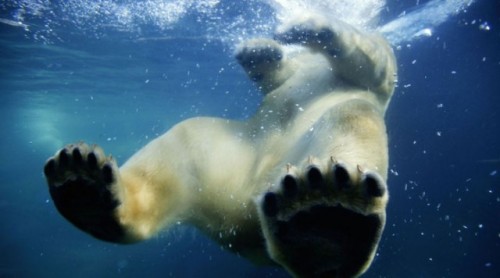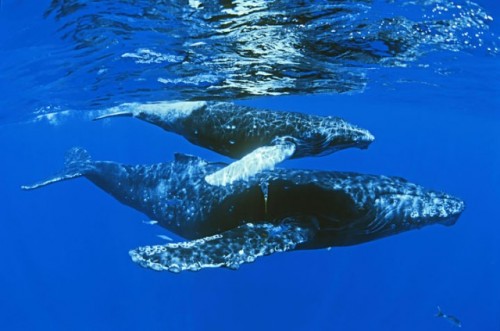
By Jordan Raup
We’ve come a long way since Nanook of the North, the first full-length feature documentary. Flaherty’s 1922 look at Inuk life was a revolutionary staple in cinema, pushing romanticism to the its fullest potential at that time. Almost 90 years later we have Earth, one of the most beautiful cinematic achievements I have witnessed and also the most expensive documentary film ever made with a $47 million budget. The film is based off the popular BBC/Discovery series, Planet Earth. It uses many of the same spectacular scenes from the show, condensed for film.
Although released internationally in 2007, the film is finally getting it’s release on Earth Day. The narrator, originally Patrick Stewart, has been replaced with James Earl Jones. The basic premise is a journey across Earth, loosely following three different sets of animals. We explore the Arctic with polar bears, the Kalahari desert with African elephants, and go on an adventure from the tropic to the antarctic with a pair of humpback whales. Mixed in with these stories are smaller moments of beauty, from the first flight of mandarin ducklings to the mating season of New Guinea birds. These memorable little moments are packed within the film, each giving more than enough reason to love Earth.
Time gets manipulated in a number of entrancing ways throughout the film. A time-lapse photography sequence in which we see the steady growth of jungle spores and fungi in mere seconds is simply breathtaking. Time is not only sped up, some of the best moments of the film are when we are are privy to delayed scenes of primal passion. A cheetah viciously hunting a gazelle rivals any chase scene in the Bourne films. Our eyes are open to a range of fascinating relationships that occur right here on our planet.

For those concerned that the environmental message may be overwhelming there is no need to worry. It’s definitely apparent, but unlike a documentary like An Inconvenient Truth, this one tells the messages through tender stories of these creatures. Instead of spitting out a bunch of facts, we are shown a polar bear who, because of exhaustion, can’t fight for food. This exhaustion comes from swimming for miles in open water with no rest in sight, a direct result of global warming. This vulnerable moment, like many others in the film, hit me unexpectedly and will truly makes one think about where our planet is heading.
The “awww’s” and “oooo’s” heard by the audience throughout the film wasn’t for nothing. There are some eloquently effective moments while one is taken on this 90-minute tour of Earth. Having never seen Planet Earth, this was an all-new experience for me, which may effect some people’s enjoyment of the film. I have no doubt in reccomending this experience to everyone. It’s universal images and imperative messages can be interpreted by all of mankind. I’ll be in line every Earth Day to see what new adventure Disneynature will unveil to the world.
8 out of 10
Did you see Earth? What did you think?

